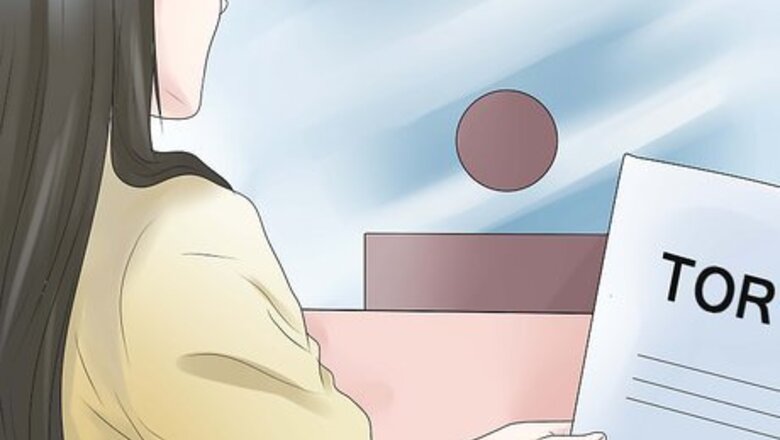
views
Earning a Diploma Online

Get a copy of your high school transcripts. Start by finding out how many credits you have and how many you still need to graduate.

Figure out what type of online school is right for you. Online learning has gained a lot of traction in recent years, making it a great option for anyone who wants to take high school courses. Whether you're a teenager still of high school age who wants an alternative experience, or you're an adult who has spent years away from the classroom, there's an online learning program out there that will suit your individual needs. Many states offer public online high school programs that are completely tuition free. In some cases, computer equipment and internet access is also compensated. Private online high schools often cater to particular groups of students, such as older students or those from a particular religious groups. These schools normally charge tuition, but financial aid is often available. Some colleges and universities offer online high school diploma programs. These are often geared toward students who wish to go on to enroll in the college after completing the high school program.

Find one that's accredited. It's very important to make sure the online program you choose is accredited as a high school. Programs advertised as being quick or easy aren't likely to cover the necessary subjects and provide the right kind of instruction. If you're interested in a particular program, call and ask if it's an accredited high school. If it's not, your diploma won't be accepted by universities and employers.
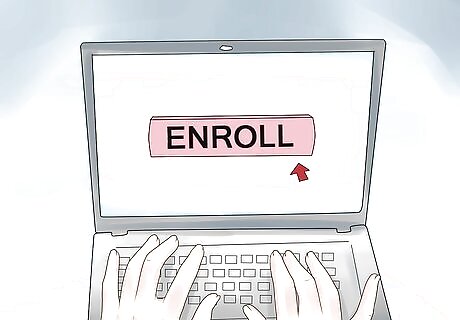
Enroll in the program. Take the steps laid out by the program to enroll. You may need to provide a transcript from your previous high school experience, as well as standard personal information. Then you will need to sign up for courses and make a plan to fulfill the requirements of the program.

Complete the program. Online high school diploma programs are similar to traditional high schools. Your courses will be taught by teachers with the same certifications as those who teach in traditional schools. You'll be assigned papers, projects, and other homework to complete in order to receive credit for the classes you take. Many online programs use video conferencing technology to share lectures and facilitate discussions. You'll interact with your other classmates as well as the teacher. Some online programs also offer (or require) participation in science experiments, field trips, and other in-person events. Many programs have a physical education requirement, which you can usually fulfill on your own time.
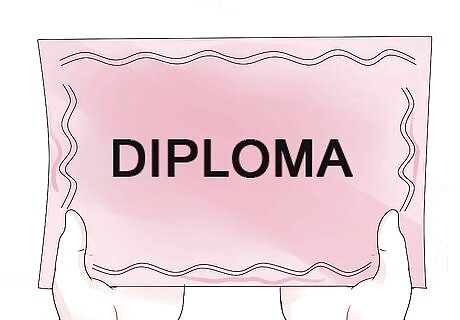
Receive your diploma. After you've completed the necessary coursework, passed your classes, and fulfilled all the requirements for finishing high school, you'll receive your high school diploma. The diploma will be dispensed differently depending on what program you attended.
Getting a GED
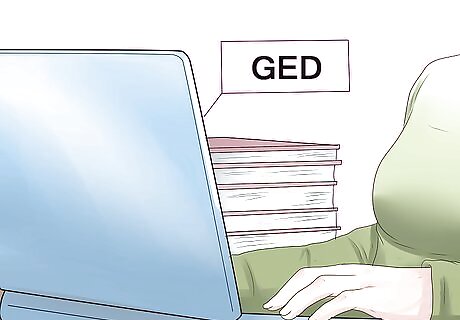
Research your state's requirements. In most states you're eligible to get a GED, HiSET or TASC Credential if you're 16 or older and not enrolled in high school. Some states have different requirements, though, so it's important to look into this before getting started. Do an online search for your state + GED, HiSET or TASC requirements to find out more.

Know what the test entails. The GED covers the same five basic subjects offered by high schools: writing, mathematics, social studies and history, science, and reading. The test is divided up as follows: The writing section tests skills in grammar, vocabulary, spelling and capitalization, with a separate written essay section. The math section tests skills in arithmetic, measurement, basic algebra, geometry, number relations, trigonometry and data analysis of charts and graphs. The social studies section tests knowledge of geography, civics and government and economics. The science section tests knowledge of life science, physical science and earth science. The reading section tests proficiency in sentence structure, reading comprehension and language usage.

Study for the test. The test is taken over the course of 7 hours and 45 minutes, with a portion of time allotted to each subject. In order to do well on such a big test, it's important to study the individual subjects beforehand. Plan to start studying at least 2 months in advance - longer if it has been years since you attended high school classes. It might seem overwhelming, but there are a lot of resources available to help you bone up before test day arrives. You can buy or borrow a GED preparation book or use online resources to help you prepare. Make sure to take plenty of practice tests so you get used to the test format. Double down on any areas where your knowledge is weaker, and consider getting tutoring in that subject area. You can enroll in GED, HiSET or TASC preparation classes at any community college in NC for free, or hire a GED tutor to help you prepare.

Sign up to take it at a testing center. Find a testing center in a location that's convenient for you. Call the center or sign up online for a test date. The test itself is currently not available online - it must be taken in person at a testing center. Avoid signing up for websites that claim to offer the test online as they are fraudulent.
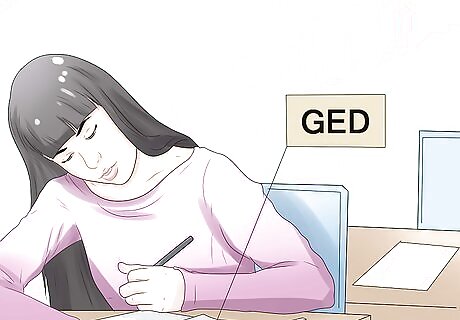
Take the test on the designated date. On the day of the test, show up a little early so you have time to find the right room and get settled in. Bring any materials you were requested to bring by the testing center. If you signed up to take an all-day test, make sure your schedule is cleared for the day. In some cases you can take the test in 2 parts. Make sure you get a good night's sleep before the test. This makes a huge difference when it comes to concentration. You'll probably get a lunch break, but be sure to eat a hearty breakfast so you don't get distracted by hunger during the test. Follow the test administrator's instructions closely. Breaking any rules, even accidentally, could cause you to get disqualified from taking the test that day.
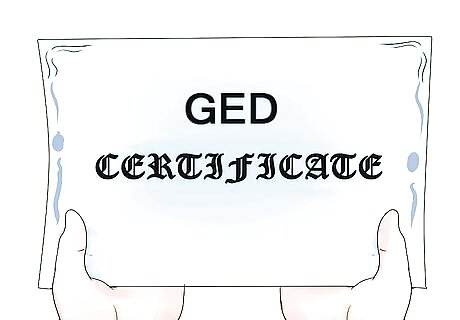
Receive your score and GED certificate. After you take the test, you may either need to call your testing center after a designated amount of time, or you'll receive your score in the mail.
Going Back to High School

Get a copy of your high school transcript. You'll need to know exactly how many credits you still need, so you can be sure to enroll in the right type of program. Contact your former high school and request a copy.

Look for adult programs in your area. Every state offers a variety of high school completion programs suitable for adults. Do an online search and check with local community colleges to find a program that meets your needs.
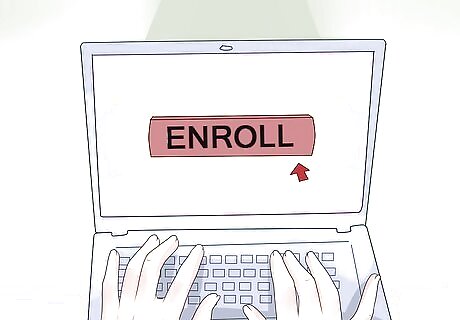
Enroll in a program. In most cases, adult high school diploma programs are free. You may need to fill out an application before the stated deadline in order to make sure you can attend the classes you want to attend. When you enroll, you will probably be set up with an advisor, who can look through your transcript and help you make sure you get the credits you need.
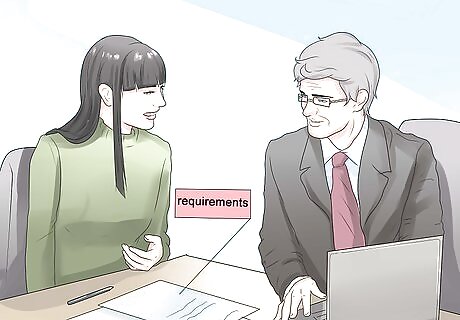
Complete the program requirements. Each program has requirements that differ slightly according to state law. Work with your advisor to lay out a plan to complete all the credits you still need. Depending on how many years of high school you previously completed, this could take just a few months or several years.
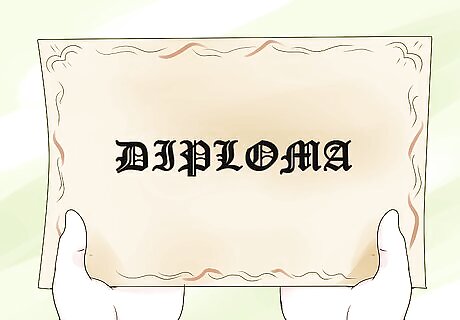
Receive your diploma. Upon completing your program, passing your classes and meeting all the requirements, you'll be able to graduate with a high school diploma.















Comments
0 comment